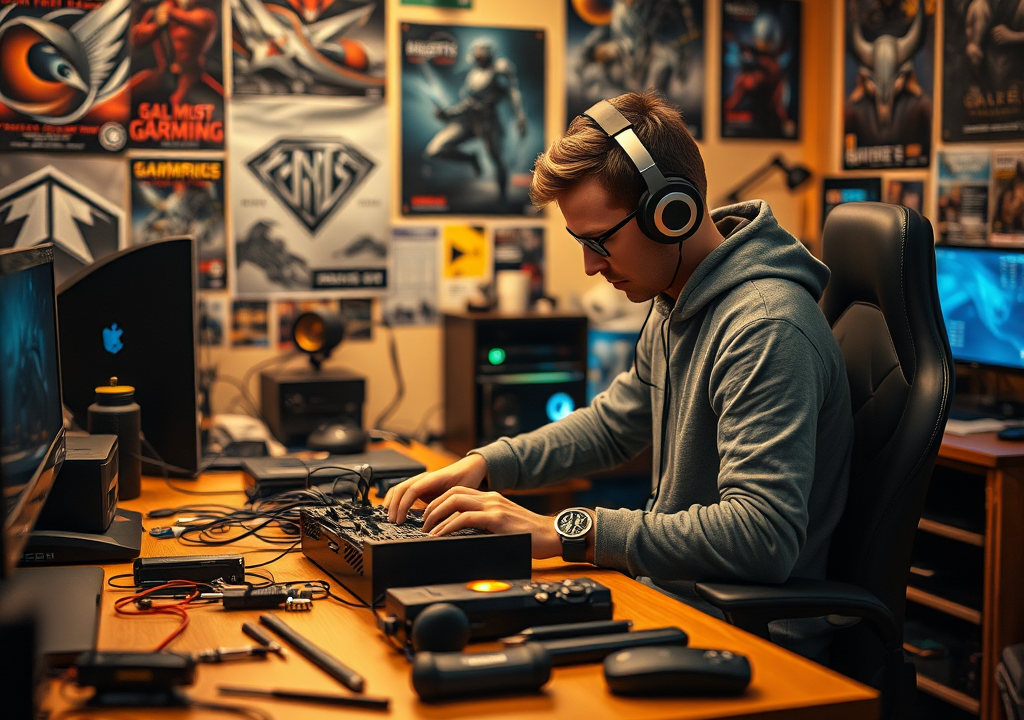The evolution of laptop design reflects ongoing technological advancements and changing user requirements. This article explores the significant milestones in laptop design, covering the varying aspects from functionality to aesthetics that have marked its transformation over the years.
From Brick to Sleek: The Early Years of Laptops

In the early days, laptops were hefty, cumbersome devices that bore a greater resemblance to briefcases than the sleek, lightweight machines of today. The first portable computer, the Osborne 1, released in 1981, weighed a staggering 24 pounds and featured a tiny 5-inch screen. This initial design focused on portability over comfort and aesthetics. These machines were mostly used by business professionals who needed computing power on the go, despite the compromises in usability and design aesthetics.
The Advent of More Practical Designs
With rapid technological advancements in the 1990s, laptops began to lose some of their bulk. Companies like IBM and Apple started introducing more compact and user-friendly designs. The introduction of TFT LCD screens provided sharper displays, while innovations in battery technology extended the operational life of laptops. Moreover, the incorporation of pointing devices like trackballs and touchpads replaced external mice, making laptops more practical for everyday use.
The Era of Ultraportables
By the early 2000s, laptops had become slimmer, lighter, and more powerful. Companies like Sony Vaio and the ThinkPad series by Lenovo led the way in introducing ultraportable laptops. These laptops featured enhancements such as more efficient processors, greater storage capacities, and better heat management. Aluminum and magnesium alloys started to replace bulkier plastic components, providing better durability and a more refined look. The introduction of SSDs (Solid State Drives) significantly decreased the weight and increased the speed, making ultraportables highly desirable among users.
The Modern Age: Aesthetic Meets Functionality
In today’s world, laptops are not just tools for productivity but also lifestyle accessories. The emergence of ultrabook laptops around 2011, led by Intel’s specifications, brought high performance packed into stylish, thin, and light builds. Apple’s MacBook Air, Microsoft’s Surface series, and Dell’s XPS lineup set new standards for what modern laptops should be. Innovations like Retina displays, multi-touch screens, and advanced thermal management systems have become standard. The materials used have also evolved, with some laptops boasting aerospace-grade aluminum and carbon fiber.
Key Features Driving Contemporary Laptop Designs
Current laptop designs emphasize a blend of performance, portability, and aesthetic appeal. Here are some key features:
-
Touchscreen and 2-in-1 Capabilities:
Many laptops now offer touchscreens and the ability to convert between tablet and laptop form factors. -
Enhanced Graphics:
Modern laptops incorporate powerful GPUs that make them suitable for gaming, video editing, and graphic design. -
Long Battery Life:
Improved battery technologies provide extended use times, often surpassing 10 hours on a single charge. -
Connectivity and Ports:
USB-C, Thunderbolt, and other versatile ports ensure better connectivity and data transfer speeds. -
Aesthetics and Build Quality:
Slim profiles, high-quality materials, and elegant designs have become paramount.
These features showcase how companies are prioritizing the user experience in both form and function.
Conclusion
The evolution of laptop design is a testament to the relentless pursuit of innovation in technology. From the bulky and utilitarian origins to the sleek and sophisticated devices we use today, laptops have undergone a significant transformation. As technologies continue to advance and user demands evolve, the future of laptop design promises even greater integration of functionality, portability, and style.
FAQs
Q1: What was the first portable computer?
A1: The Osborne 1, released in 1981, is considered the first portable computer, albeit with a hefty weight of 24 pounds.
Q2: When did laptops start to become more user-friendly?
A2: Laptops began to become more user-friendly in the 1990s, with the introduction of compact designs, sharper TFT LCD screens, and integrated pointing devices like trackballs and touchpads.
Q3: What are ultraportables?
A3: Ultraportables are lightweight, slim laptops designed for enhanced portability without compromising on performance, often featuring efficient processors, increased storage capacities, and better heat management.
Q4: What is an ultrabook?
A4: An ultrabook is a high-performance laptop that meets Intel’s specifications for sleek design, long battery life, and advanced processing power, exemplified by models like the MacBook Air and Dell XPS.
Q5: What are some key features in modern laptop designs?
A5: Key features in modern laptop designs include touchscreens, 2-in-1 convertibility, enhanced graphics, long battery life, versatile connectivity options, and high-quality materials for improved aesthetics and build quality.





